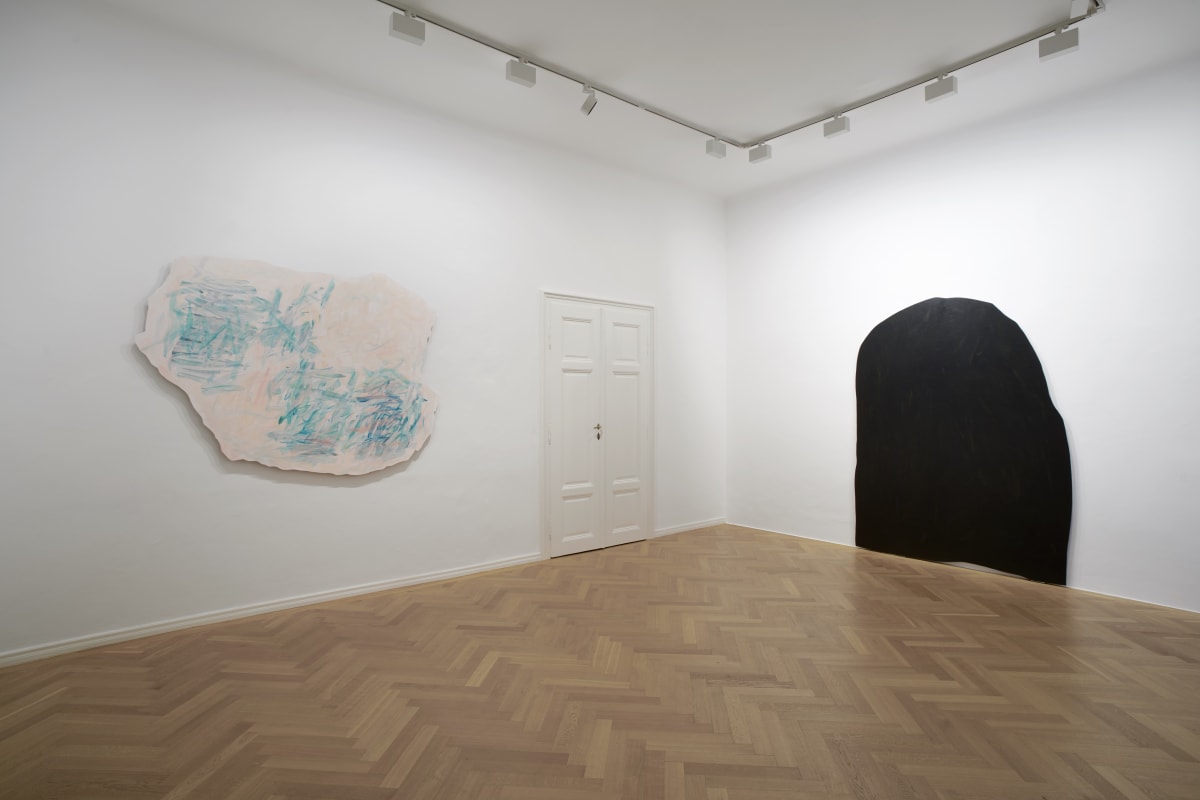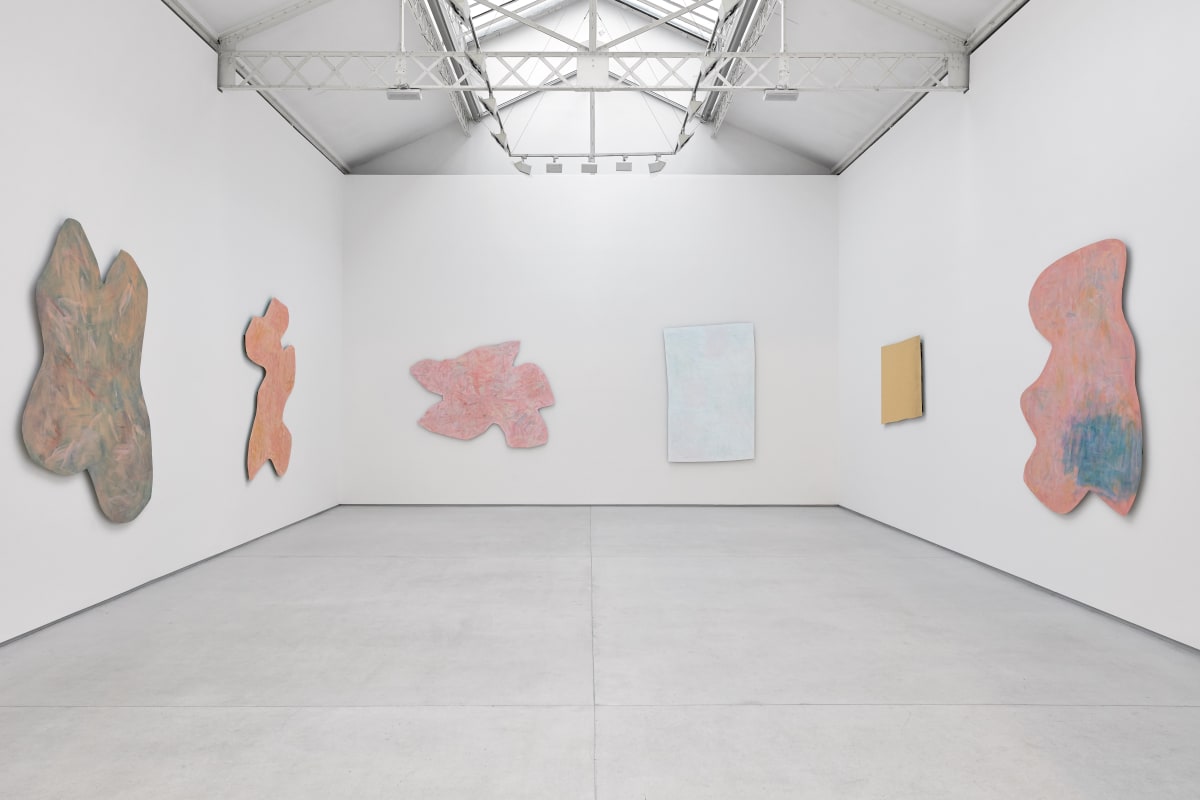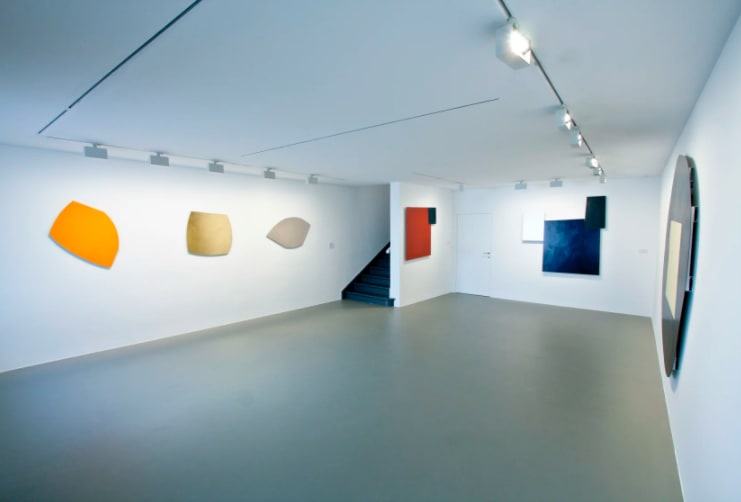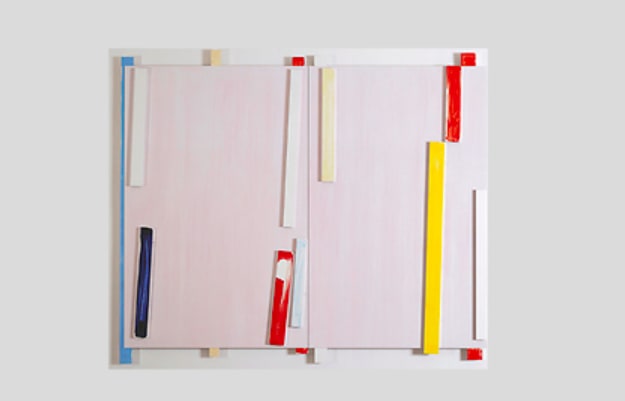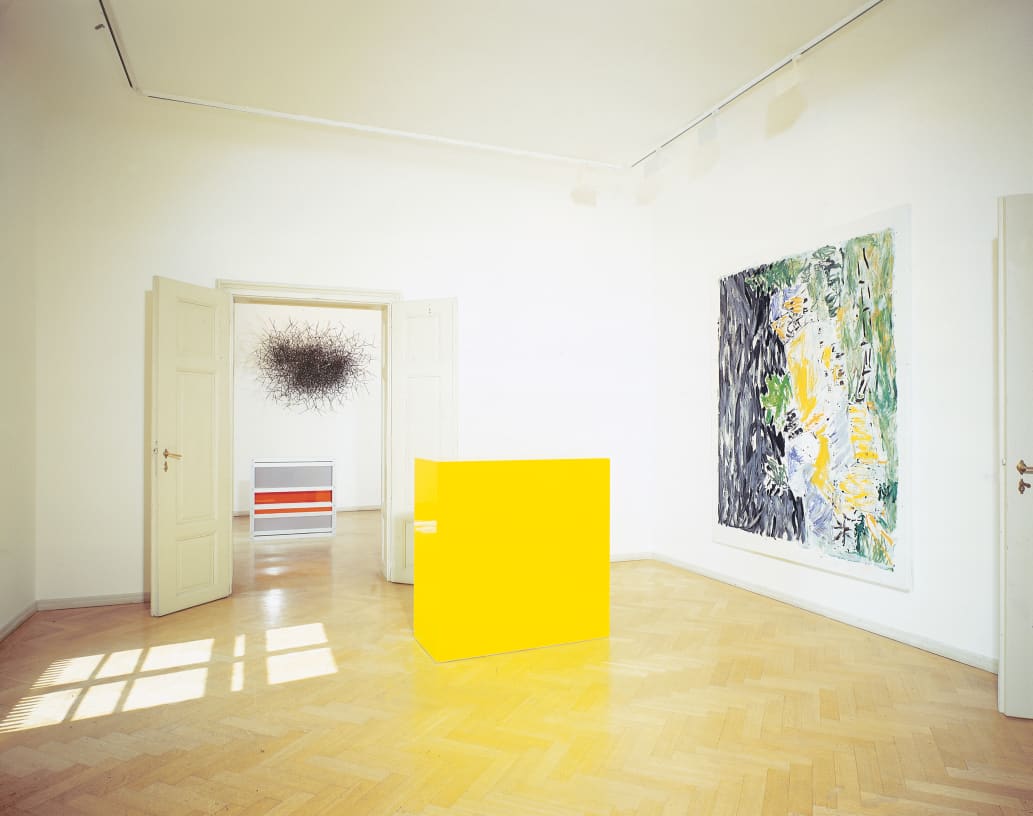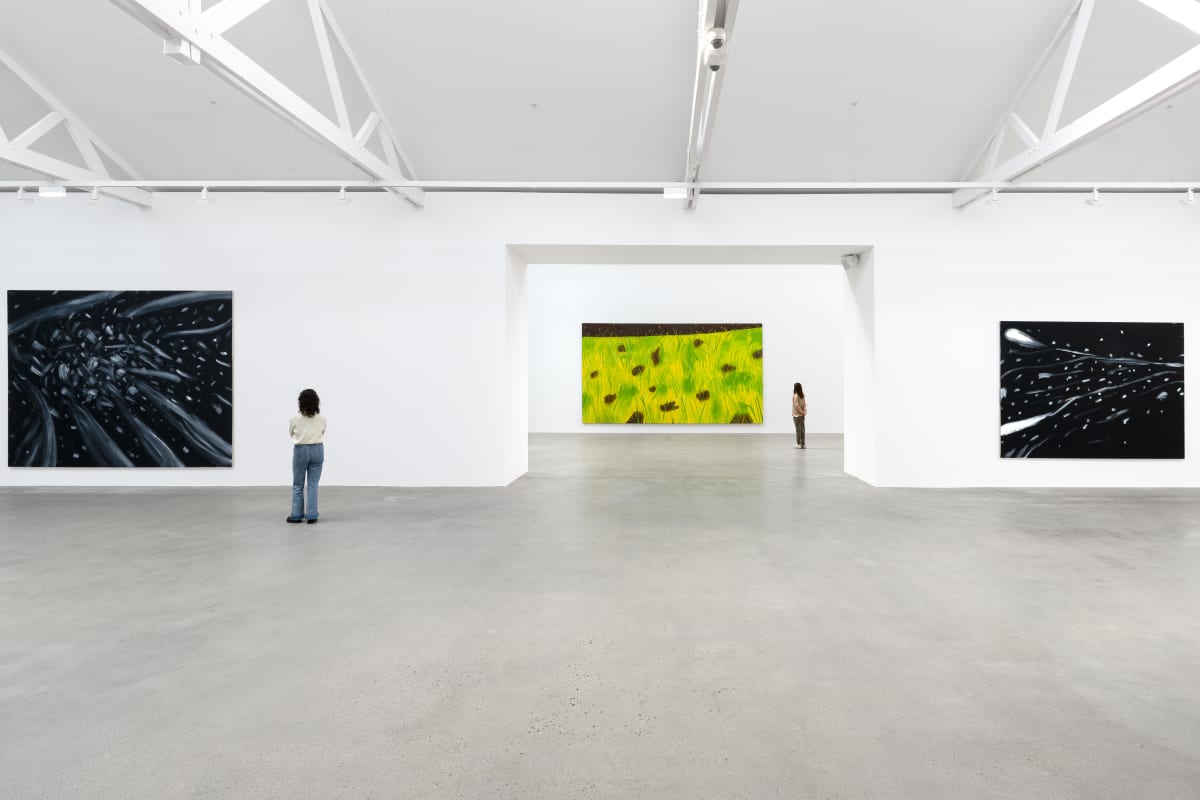

Imi Knoebel
Overview
'If you want to stay alive, you have to do something radical.'
Imi Knoebel's resolutely abstract art investigates the fundamentals of painting and sculpture through an exploration of form, colour and material. His aim is to uncover the basic material elements of art, which he locates in the simple interactions between humans and the essential conditions of our world. He remains true to the tradition of non-representational art, following in the footsteps of artists such as Kazimir Malevich or Piet Mondrian. The artist cites his discovery of Malevich's Black Square (1915) as a watershed moment that liberated his conception of painting, giving him 'the overwhelming feeling that I could start at nothing'. He has developed an experimental approach and serial way of working, characterised by a haptic use of colour, geometric vocabulary of forms and material simplicity.
Born Klaus Wolf Knoebel in Dessau in 1940, he attended the Werkkunstschule Darmstadt in 1962, enrolling in a course taught by professors Johannes Itten and László Moholy-Nagy. It was there that he met fellow student Rainer Griese, who was similarly enamoured with the work of Malevich, and the pair became known as Imi & Imi, a shortened version of 'Ich mit Ihm' ('I with him'). It was also the name of an East German washing detergent, giving their radical self-branding an ironic twist. They convinced Joseph Beuys to accept them as students at the Kunstakademie Düsseldorf and Beuys gave them the keys to Room 19, a studio adjacent to his legendary classroom in Room 20. It was in this space that Knoebel produced his defining early work, Raum 19 (1968), a modular structure composed of geometric shapes in unpainted Masonite, an unassuming industrial material that he has used throughout his career.
Imi Knoebel's resolutely abstract art investigates the fundamentals of painting and sculpture through an exploration of form, colour and material. His aim is to uncover the basic material elements of art, which he locates in the simple interactions between humans and the essential conditions of our world. He remains true to the tradition of non-representational art, following in the footsteps of artists such as Kazimir Malevich or Piet Mondrian. The artist cites his discovery of Malevich's Black Square (1915) as a watershed moment that liberated his conception of painting, giving him 'the overwhelming feeling that I could start at nothing'. He has developed an experimental approach and serial way of working, characterised by a haptic use of colour, geometric vocabulary of forms and material simplicity.
Born Klaus Wolf Knoebel in Dessau in 1940, he attended the Werkkunstschule Darmstadt in 1962, enrolling in a course taught by professors Johannes Itten and László Moholy-Nagy. It was there that he met fellow student Rainer Griese, who was similarly enamoured with the work of Malevich, and the pair became known as Imi & Imi, a shortened version of 'Ich mit Ihm' ('I with him'). It was also the name of an East German washing detergent, giving their radical self-branding an ironic twist. They convinced Joseph Beuys to accept them as students at the Kunstakademie Düsseldorf and Beuys gave them the keys to Room 19, a studio adjacent to his legendary classroom in Room 20. It was in this space that Knoebel produced his defining early work, Raum 19 (1968), a modular structure composed of geometric shapes in unpainted Masonite, an unassuming industrial material that he has used throughout his career.
Since the 1990s, he has increasingly used shaped aluminium as the ground for his paintings, creating geometric colour fields that are defined by the relationship between the pigments and their boundaries. This use of a shaped ground is visually reminiscent of Minimalist works by American artists such as Frank Stella and Ellsworth Kelly, although Knoebel retains traces of the artist's hand in his gestural strokes of paint. Art historian Max Wechsler writes, 'The pictorial ground sets firm limits to the painting on aluminium, to which Knoebel more or less deals in his brushstrokes, but against which he can also rebel by opposing it with small-scale densifications […] which become almost independent as an internal configuration.'
In addition to solo museum exhibitions at the Kunsthalle Düsseldorf in 1975, Kunstmuseum Winterthur and Kunstmuseum Bonn in 1983, and the Deichtorhallen Hamburg in 1992, Knoebel's work was shown at documenta 5 (1972), 6 (1977) and 7 (1982). In 1996, the Haus der Kunst in Munich organised a large retrospective and the Kestner Gesellschaft in Hanover celebrated its 75th anniversary in 2002 with an exhibition of his work. In 2008, Dia: Beacon in New York presented Knoebel’s series 24 Farben – für Blinky (1977), created shortly after the untimely death of his friend and fellow artist Blinky Palermo. The following year, the Neue Nationalgalerie in Berlin showed some of his most important works. In 2011, he created six monumental stained-glass windows for the Reims Cathedral in France, which had been damaged by German bombing in the First World War. The Kunstmuseum Wolfsburg marked the artist's 75th birthday in 2014 with a comprehensive retrospective of his works from the past five decades . In 2016, his work was shown in dialogue with ceramics by Fernand Léger at the Musée National Fernand Léger in Biot, France, followed by a retrospective at the Museum Haus Konstruktiv, Zürich in 2018.
Videos
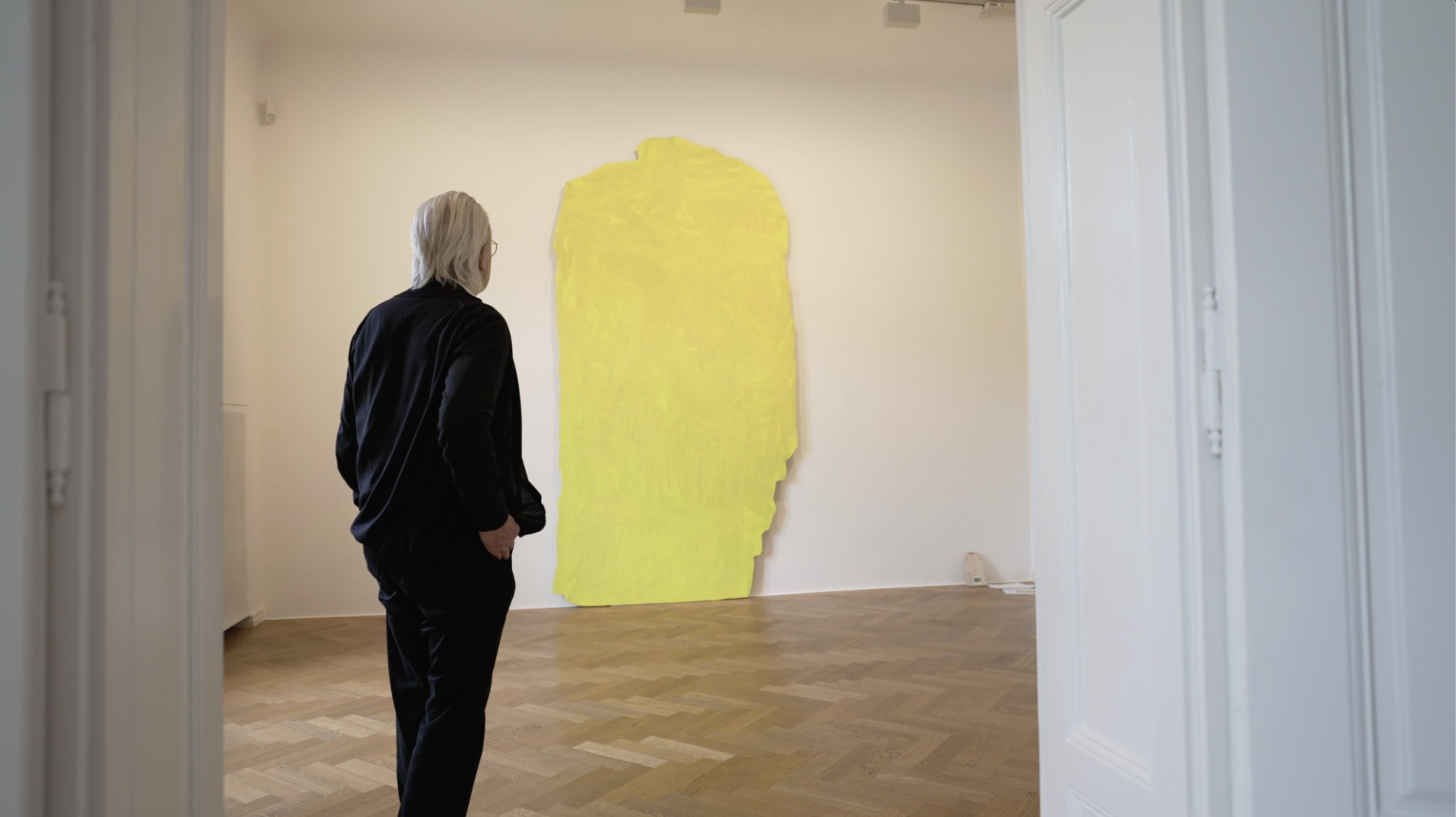


Artworks


Exhibitions
Publications












